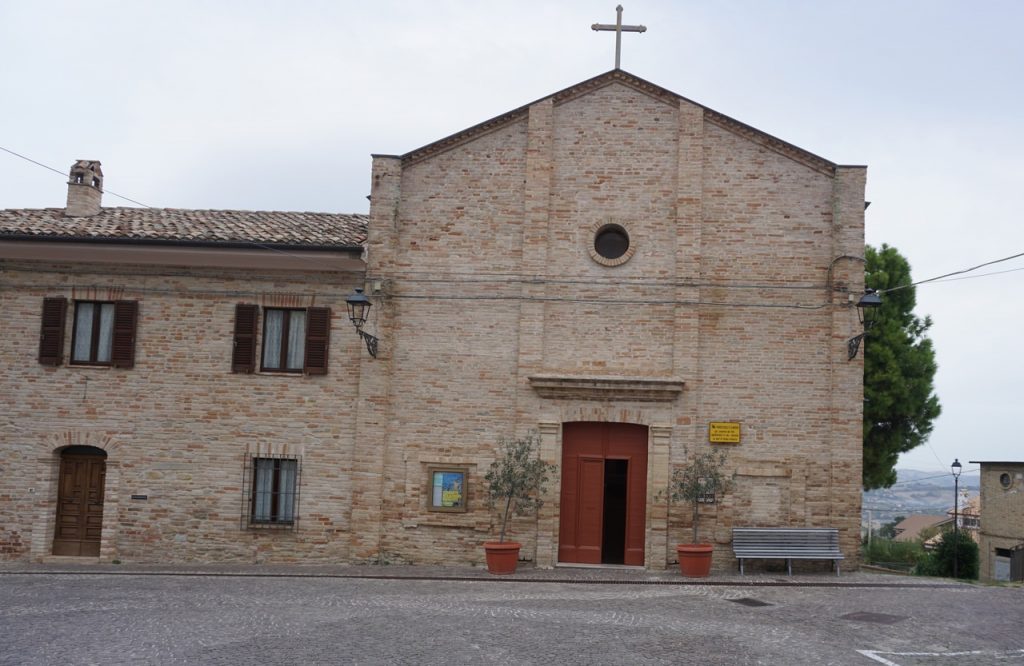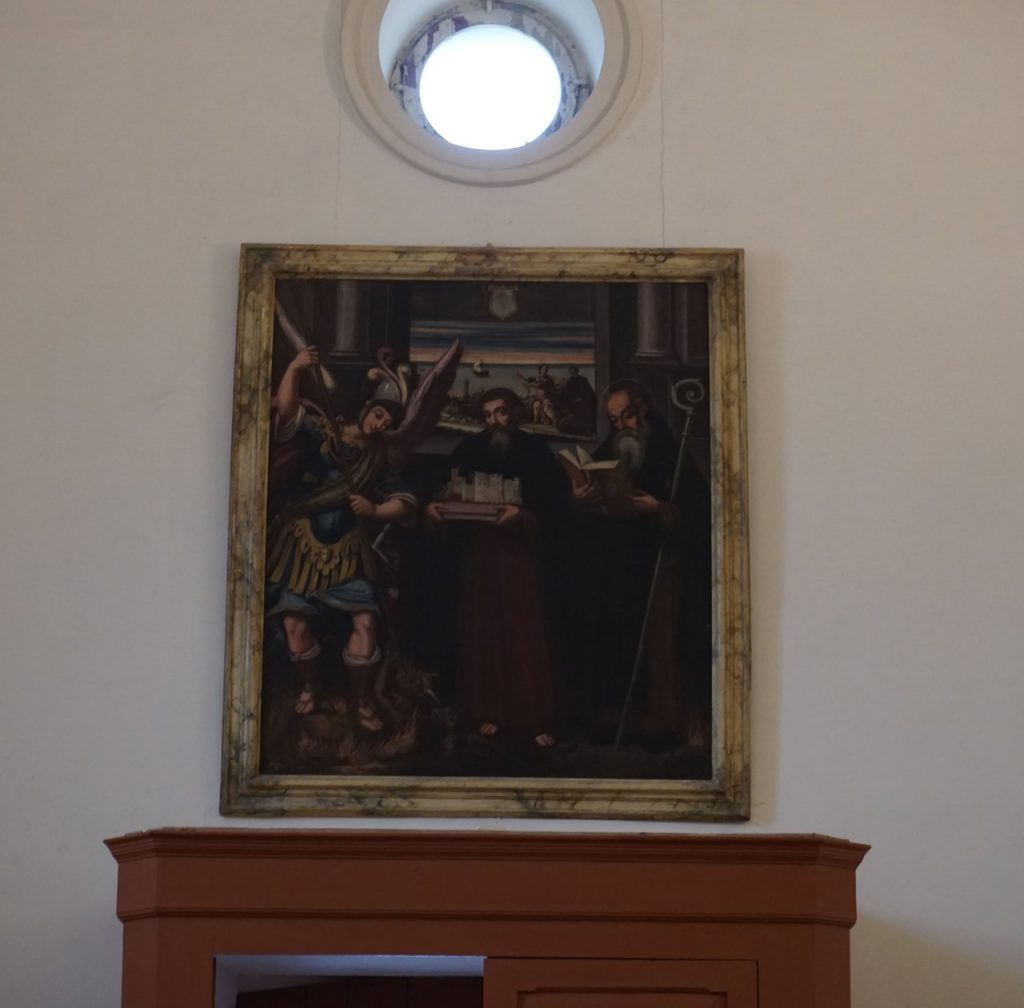Meanwhile, the village began to emerge on the eastern side of the castle walls and in 1605 the brothers Stefano and Berardino Massarini, did renovate and expand a church, built perhaps in 1563 on their land, where it was already an ancient oratory, just outside the walls, dedicated to Mary Virgin of Consolation and Saint Stephen protomartyr. In 1611 the two brothers donated the church to the Hermits of Saint Augustine, who opened a small convent in the adjacent house, active until 1652, when Pope Innocent X decided to close the small communities of the mendicant orders. The church, which closed to the north the square that was being formed – today Square Umberto I – had meanwhile assumed the name of Saint Agostino, which it kept until 1923, when it was dedicated to San Marone. Pietro Consolini, family of notaries and grandson of Massarini, born in Monteleone on November 25, 1565, entered the Oratory of Filippo Neri in Rome. He was a disciple and confidant of the saint and his successor in the direction of the Congregation of the Oratory, enjoying until the end of his days (31 January 1643) of great prestige for moral straightness and intellectual qualities.
In 1663 Federico Beni built a small church in the district of Asperici dedicated to Our Lady of Loreto, which the following year he donated to the sanctuary of Loreto. A descendant, Domenico Antonio Beni, in 1798 was elected to the assembly of the new Roman Republic representing the canton of Petritoli, of which Monteleone was part. The small square in front of the parish church of San Giovanni Battista is named after him.
Between the second half of the nineteenth century and the first years of the twentieth century – the name Monteleone di Fermo is dated in 1863 after the unification of Italy- with the construction of the palaces Lauri, Pascucci and Felici took final shape Square Umberto I, on which stands the ancient Farfense tower. The village was thus completed, while the heart of the traditional village was Square Mazzini, where between the eleventh and twelfth centuries stood the castle of Legoni, now remembered by the homonymous Castello street.
Also worth a visit is the small and fascinating Museum of Rural Life dedicated to Alduina Simonelli that offers the daily life of the farmers of Monteleone between the nineteenth and twentieth centuries.
Another gem of this small town is the valuable municipal historical archive with precious manuscripts of the sixteenth century perfectly restored and accessible by scholars.


